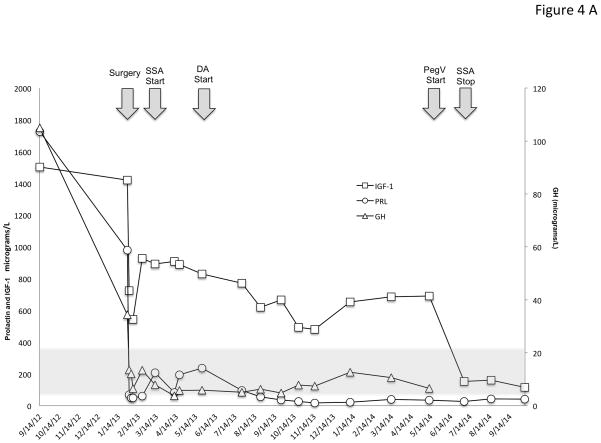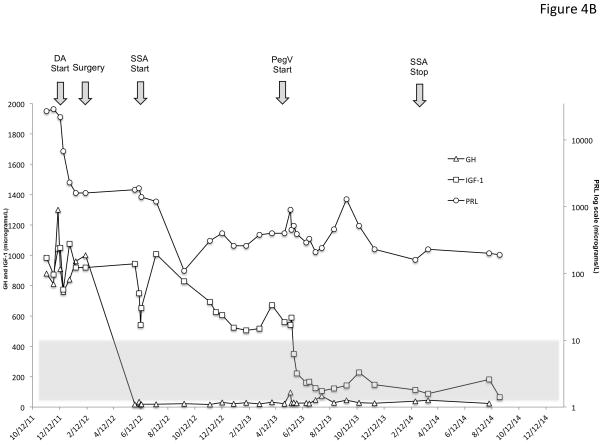Figure 4.
Time course of the effects of treatment modalities on GH, IGF-1 and PRL in two representative patients with X-LAG syndrome. Panel A shows the evolution of sporadic patient S1, a male who was diagnosed at the age of 56 months and underwent primary neurosurgical treatment to grossly resect the visible tumor. This surgical intervention lead to marked decreases in GH and PRL, but IGF-1 remained very high (normal IGF-1 range shown as a grey shaded zone). Addition of a SSA (octreotide LAR 30 mg/month) and later a DA (cabergoline 0.25 mg 5× week) reduced the IGF-1 by about 50% from the postoperative level but as the IGF-1 remained elevated and overgrowth continued, pegvisomant (10mg/day) was eventually added and lead to a rapid decrease in IGF-1, which allowed the SSA to be withdrawn. In Panel B, a female sporadic case S6 first received a dopamine agonist and later underwent a neurosurgical intervention, which removed the majority of the visible tumor. The post-operative GH levels were decreased greatly but remained elevated to an extent that IGF-1 secretion was still greatly increased (normal range for IGF-1 shown as a grey shaded zone)and growth continued. Addition of a depot somatostatin analog (octreotide LAR 30mg/month) did not control IGF-1 alone or in combination with cabergoline, although IGF-1 levels showed approximately a 40% decrease from levels before SSA were started. Due to the lack of control and continuing somatic overgrowth, pegvisomant was added and rapidly brought IGF-1 levels and growth under control. As IGF-1 levels fell to near the lower limit of normal for the age of the patient (5 yr), the SSA was withdrawn and subsequent IGF-1 was in the middle of the normal range on pegvisomant 10mg/day.


